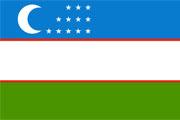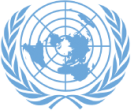One of the largest global environmental disasters in the recent history which is being experienced by countries and the population of 62 million people in Central Asia, is the tragedy of the Aral Sea that in its environmental, climatic, socio-economic and humanitarian consequences poses direct threat to the region's sustainable development, health, gene pool and future of the people residing in it.
The Aral Sea, which was once a unique, beautiful and one of the largest closed water reservoirs in the world, is practically on the verge of complete disappearance and turned into an unprecedented disaster and irreparable damage to the life of the population living there, the ecosystem and biodiversity of the Aral Sea.
Until 1960 the Aral Sea had an area of 68.9 thousand km² with the volume of water 1083 cubic km, its length extended to 426 km, width - 284 km, the greatest depth was 68 m.
The Aral Sea area was a region with a wide variety of flora and fauna, 38 species of fish and a number of rare species of animals inhabited the Aral Sea basins, the number of saigas reached 1 million heads, the floristic composition comprised 638 species of higher plants.
In addition, the Aral Sea played an important role in the development of the region's economy, its production sectors, in ensuring employment of the population, and in the formation of a stable social infrastructure. In the past, the sea was among the richest of fishing grounds in the world: the annual catch of fish in the reservoirs of the Aral Sea was 30-35 thousand tons. More than 80% of the inhabitants of the Aral Sea coast were engaged in the production, processing and transportation of fish and fish products. Fertile lands of the delta of the Amudarya and Syrdarya rivers, as well as highly productive pastures provided employment for more than 100 thousand people in the sphere of livestock, poultry farming, growing of agricultural crops.
The sea also served as a climate-adjusting reservoir and mitigated the sharp weather fluctuations throughout the region, which had a favorable effect on the living conditions of the population, agricultural production and the ecological situation. The air masses invading the region during the winter period warmed up, and in the summer were cooled over the water area of the Aral Sea.
In the 1960s the problems of the Aral Sea arose and took on alarming proportions as a result of thoughtless regulation of the major transboundary rivers of the region - the Syrdarya and the Amudarya, which provided the Aral Sea in the past with 56 cubic km of water annually. The significant growth of the population living in this area, the scale of urbanization and intensive development of lands, the construction of large hydrotechnical and irrigation facilities on the watercourses of the Aral Sea basin in the past, without taking into account the environmental consequences, created the conditions for desiccation of one of the most beautiful reservoirs on the planet.
A direct consequence of the desiccation of the sea was dramatic climate change, felt not only in Central Asia, but also in other regions. The Aral Sea crisis zone directly covers the territories of Turkmenistan, Kazakhstan and Uzbekistan, as well as indirectly - Tajikistan and Kyrgyzstan.
On the bare part of the Aral Sea a new salt desert with an area of 5.5 million hectares appeared. Over 90 days a year, dust storms rage over it, spreading over 100 million tons of dust and poisonous salts into the atmosphere for thousands of kilometres each year.
The threatening impact of the Aral catastrophe is observed all over the world today. According to international experts, poisonous salts from the Aral region are found on the coast of Antarctica, on the glaciers of Greenland, in the forests of Norway and many other parts of the globe.
To the great regret, today it became obvious that the revival of the Aral Sea to its full condition is already impossible.
The most important task of the present time is to reduce the destructive impact of the Aral Sea crisis on the environment and livelihoods of millions of people living in the Aral Sea area.
Since the beginning of the 1990s, all countries experiencing the devastating consequences of the Aral catastrophe, from the rostrum of the United Nations and other international and regional organizations, have been constantly drawing the attention of the world community to the Aral problem and its close relationship with regional and global security issues. At the 48th session of the UN General Assembly on September 28, 1993 and at its 50th session on October 24, 1995, representatives of the countries of the Central Asian region appealed to the world community to help save the Aral Sea, drawing the attention of the United Nations to the fact that without support and assistance of international financial institutions and developed countries and without the leading role of the UN it is impossible to solve this problem.
During the United Nations Sustainable Development Summit in September 2015, in New York, the Government of Uzbekistan initiated the establishment of a special Trust Fund for the Aral Sea and the Aral Sea zone under the auspices of the United Nations, its main task will be to coordinate efforts and implement targeted programs and projects in the following key areas:
- protection of health and the preservation of the gene pool of the population, the development of an efficient system of incentives for socio-economic development of the area adjacent to Aral, and to create the necessary decent life conditions for the people living in this region;
- preservation of the ecological balance of the Aral Sea region, adoption of consistent measures to combat desertification and implement the rational water use;
- restoration of biodiversity of animal and plant life, the preservation of unique flora and fauna, which is currently on the verge of extinction;
- the use of limited water resources in the region, especially the transboundary waterways - the Amudarya and the Syrdarya, in the interests of all countries in the region and in strict accordance with the norms of international law.
In order to implement this initiative, together with the UN the programme “Building the resilience of communities affected by the Aral Sea disaster through the Multi-partner Human Security Fund for the Aral Sea” has been developed. An official launch of this programme was held in Tashkent, on February 10, 2017.
Huge efforts are also directed to the practical solution of these tasks at the regional level. A landmark event in this regard was the creation in January 1993 of the International Fund for Saving the Aral Sea (IFAS), the founders of which were Kazakhstan, Kyrgyzstan, Tajikistan, Turkmenistan and Uzbekistan.
In order to prevent the negative consequences of the Aral problem, within the framework of IFAS three programs have been implemented to assist the countries of the Aral Sea basin (ASBM-1, ASBP-2, ASBM-3).
At the national level, Uzbekistan is undertaking great efforts to combat the negative consequences of the desiccation of the Aral Sea on the environment and human health.
On August 29, 2015 the Cabinet of Ministers of the Republic of Uzbekistan adopted the Resolution "The comprehensive programme for mitigation of consequences of Aral catastrophe, rehabilitation and social-economic development in the Aral Sea coastal area for 2015-2018" that is envisaged to implement projects worth of $3.9 billion in five main directions: the economical and rational use of water resources and enhancement of the management system, creation of conditions for reproduction and preserving the gene pool and health of the population residing in zones of environmental risk, development of the necessary economic factors and the mechanisms for increase in level and quality of life of the population of Priaralya, protection and conservation of flora and fauna, restoration of ecosystems and biodiversity.
On January 18, 2017 the President of the Republic of Uzbekistan also approved the State program on development of the region Priaralya for 2017 - 2021 aimed at improving the conditions and quality of life of the population of the region, providing for the implementation of projects worth 8.422 trillion sum.
The program includes measures to create new jobs, increase the investment attractiveness of the region, develop water supply, sewage systems, sanitation and recycling household waste, improve public health, housing conditions, improve the territories, create children's and sports play grounds, develop transport, engineering and communication infrastructure of settlements, improve of heat supply systems in Nukus and Urgench.
However, taking into account the planetary nature of the Aral catastrophe, it is necessary to expand joint actions together with the world community in this direction by implementing deeply thought-out, targeted and well-funded projects.
Position of Uzbekistan on the use of water resources of transboundary rivers in Central Asia
The Republic of Uzbekistan believes that the issue of the use of water resources in Central Asia should be considered in accordance with the universally recognized norms of international law that guarantee the rational and equitable distribution of water resources and ensure that the interests of all countries of the region are taken into account.
Given the fact that Uzbekistan currently, like other Central Asian countries located in the lower reaches of transboundary rivers, suffers a serious water shortage, the position of the Government of Uzbekistan on the use of transboundary water resources in Central Asia is as follows:
- the use of water resources of transboundary rivers in Central Asia should be solved taking into account the interests of more than 60 million people residing in all countries of the region;
- any actions carried out on transboundary rivers should not have a negative impact on the existing ecological and water balance of the region;
- the current international legal framework in the sphere of water use and ecology should become the basis for building an effective system for joint use of the resources of the transboundary rivers in Central Asia;
- the implementation of projects should be carried out on the basis of a constructive approach as well as a compromise that does not infringe upon the interests of other interested countries and guarantees two necessary conditions: prevention of the lowering of the water-balance level agreed upon by the parties for downstream countries; prevention of the violation of the ecological balance of the region.
In order to strengthen mutual understanding and trust among all the countries of Central Asia and to establish openness and transparency in relations, the Government of Uzbekistan considers it necessary to take joint efforts to find mutually acceptable and mutually beneficial solutions for resolving the rational and fair use of water resources in Central Asia.
To date, there is no other alternative to addressing the issue of distribution of transboundary water resources in the region, except for achieving a regional agreement by adopting legal instruments that promote constructive and civilized dialogue.
The Government of Uzbekistan is ready to cooperate with the Central Asian countries on the basis of these approaches in the spirit of good-neighbourly relations and friendship.


